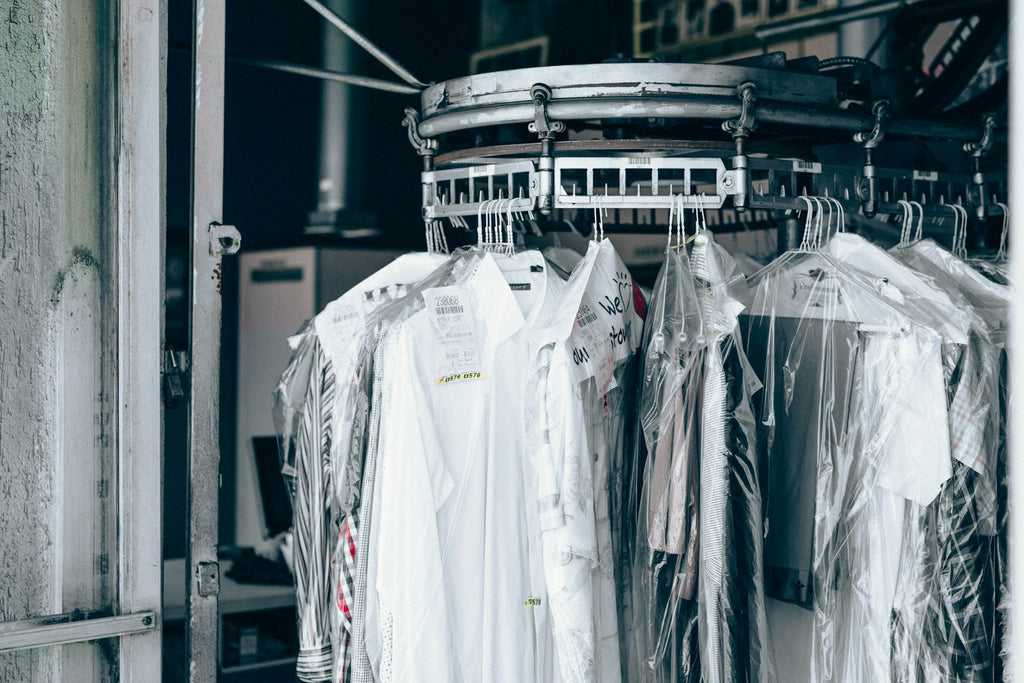If you want wrinkle-free clothes, you’re going to need a few smooth moves. Of course, doing laundry is a chore most of us face regularly. But even this seemingly straightforward task of washing, drying, and caring for your clothes can bring up challenges and questions — especially when you’re trying to maintain an environmentally responsible lifestyle. So, let’s address some of the most common laundry questions, providing solutions to help you achieve cleaner, fresher clothes with every load while also minimizing your environmental impact.
How long can clothes sit in the washing machine before going into the dryer?
Ideally, you should move your wet clothes from the washing machine to the dryer quickly after the wash cycle finishes to help prevent musty odors and color transfer. However, if you can’t act immediately, don’t leave your load in the washing machine for more than a few hours. Otherwise, you risk mold and mildew growth. If your laundry has been sitting in the machine for more than eight to 12 hours, you should run the wash cycle again. One rule to live by? Don’t run a load before heading out of the house for a few hours. Ideally, you’ll want to be home to transfer the clothes to the dryer and ensure they are completely dry before folding or hanging them up to prevent wrinkles.

How much laundry detergent to use per load?
How much detergent you’ll need depends largely on the size of your load and how dirty your clothes are, of course. But if you’ve been dealing with liquid or powder detergent, you know what a headache it can be measuring the right amount. A better option? SaltyLama has already done the math for you. Our eco-friendly laundry detergent sheets ensure you'll never have to think about whether you're putting in too much detergent — or too little. Why? Because they are ridiculously easy to use. For a regular-sized load, simply tear a strip — two strips to a sheet — and put it where your old detergent used to go. For larger loads, one entire sheet will do the trick.
If you want to make your laundry routine even easier, skip the store and lines by subscribing. You’ll save money and never run out of detergent again. Just schedule when you want your order. You can cancel, pause, or skip an order on your subscription whenever you like.

What should you never put in the dryer?
Dryers are essential tools, of course, but they’re not designed for every material. Certain clothing items and fabrics simply aren’t well-suited for your machine and should be air-dried instead to prevent damage or shrinkage. Examples of materials not to be put in the dryer include delicate fabrics like silk, wool, and cashmere, and garments with embellishments, lace, or sequins. Additionally, items with heat-sensitive materials like elastic or rubber should be air-dried to maintain their integrity.
When in doubt, air dry. You will save yourself the heartbreak of a ruined garment, even if it takes a little longer to dry. Check out these laundry mistakes to avoid for more tips.
How do I remove set-in stains that have already been cleaned?
To tackle set-in stains that have survived the wash cycle, pretreat the stained area with a stain remover or a mixture of detergent, baking soda, and water or white vinegar before rewashing the garment again. One pro tip to keep in mind? You can put a splash of white vinegar in every load of laundry to help remove odors and fight stains during the wash cycle. For exceptionally stubborn stains, you might need to use a stain-removing product specifically formulated for the type of stain you are dealing with, such as grease, ink, or wine. Start your stain-fighting journey by combating these common stains — grass, mud, and sweat.

What clothes should never be washed together?
Have you ever turned a white shirt pink or felted your cashmere sweater? It’s important to separate clothes into different loads based on their colors, fabrics, and care instructions to prevent color bleeding, fabric damage, and pilling.
For example, wash dark-colored items separately from light-colored ones to avoid dye transfer. Additionally, separate delicate fabrics from rougher textiles to prevent friction damage. This is how pilling and felting occur.
Generally, you should wash materials like wool and cashmere on delicate or hand wash them for the safest option. Avoid mixing them with your regular load of laundry.

Can I wash a “dry clean only” item at home?
While we always recommend following the care instructions on clothing labels, some “dry clean only” garments may be safely hand-washed or machine-washed on a gentle cycle using a mild detergent like our laundry sheets. These might be items like silk tops and wool sweaters without any embellishments.
However, be sure to proceed with caution and test a small, inconspicuous area of the garment first to ensure it can withstand washing without damage. When in doubt, err on the side of caution and have delicate or valuable items professionally dry cleaned.
By following these eco-friendly laundry solutions, you can tackle laundry day with confidence, knowing you’re taking steps to keep your clothes in pristine shape while also minimizing your environmental footprint. So, the next time you’re faced with a laundry dilemma, remember these tips. You’ll be able to save both time and energy, ensuring the longevity of your clothes while you enjoy a more efficient laundry routine.

